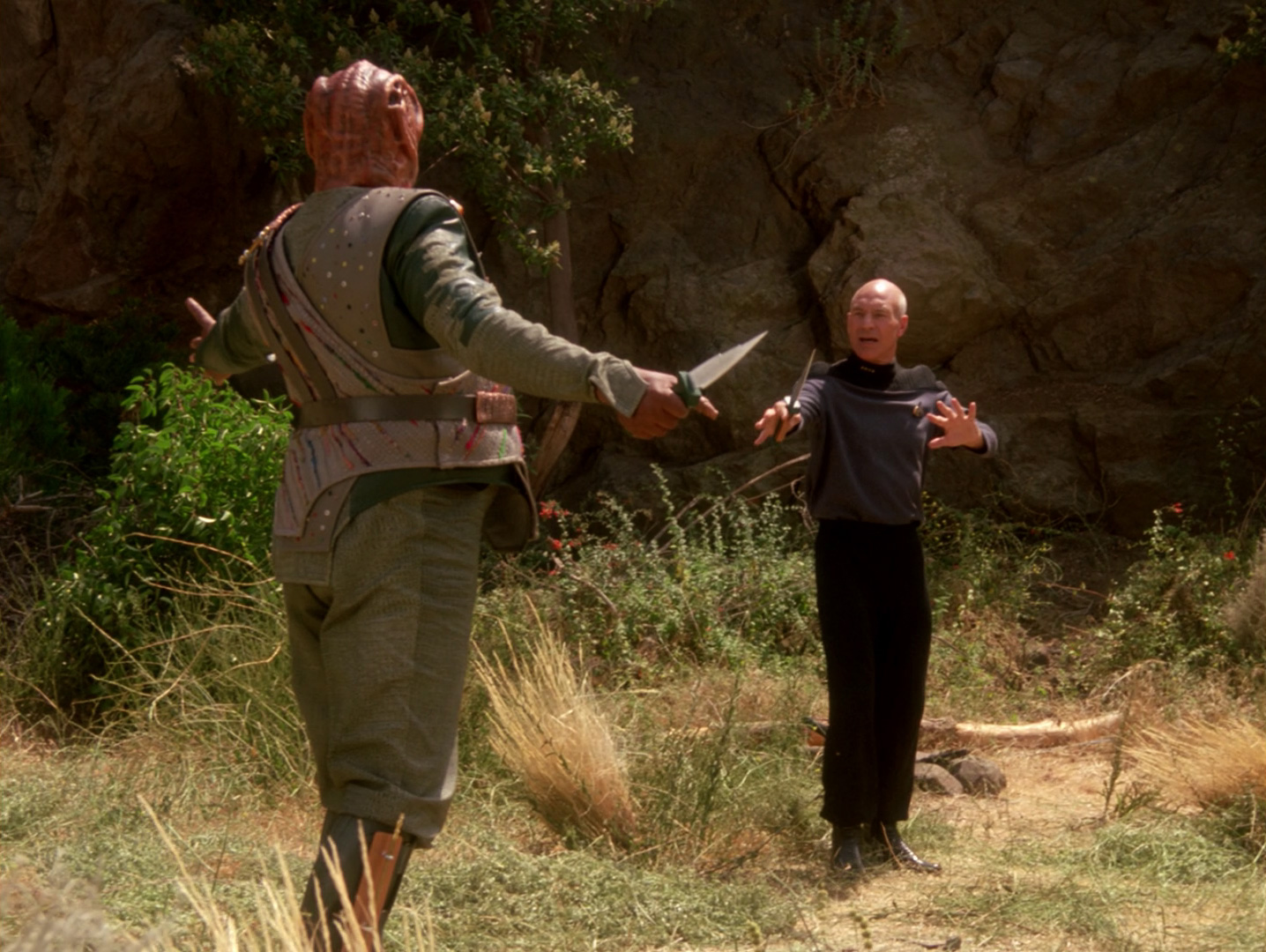Interspecies Communication
#status.stub #type.note.example #task.active #priority.medium
Template
Examples are units of knowledge that illustrate an interesting fact or observation about an object of study.
- Introduce the argument underlying the example
- What relationships are addressed?
- How does this example reflect the exhibition goals
- What is the current state of thinking
- How does a more-than-human framing challenge the status-quo
- Include representative examples as images, diagrams, videos, quotes, etc.
- How would this re-framing benefit life, scholarship, practice, etc.?
- What exhibition components relate to this example?
- Examples
- Stories
- Relationships
Example using bee and human human languages

This example features an episode from the popular television show Star Trek: The Next Generation where two species, humans and the fictional Tamarians, communicate despite vast differences in their languages.1 The Tamarians communicate entirely through allegorical references to their mythology, e.g., "Temba, his arms wide" for an intent to gift something. Captain Jean-Luc Picard, a human, establishes communication by slowly recognising the Tamarian language structure.
While dated and dramatised, the episode has inspired research in linguistics, psychiatry, natural language processing, and machine learning. Communication in Star Trek is the subject of an edited volume of academic research.2 This research is relevant for interspecies communication and more-than-human (co)-design.
Speculative fiction often inspires practical research into undeveloped ideas. Researchers developed a translation lexicon using only sparse episode dialogue and machine learning.3 This workflow could apply to nonhuman species, e.g., fungi that exhibit signs of a 'language' or species with limited 'vocabularies'4,5 Picard and Dathon's "patience" and "imagination" inspired a novel method for communicating with autistic during psychiatric treatment.6
Footnotes
Winrich Kolbe, "Darmok," Star Trek: The Next Generation (US: Paramount Pictures, September 28, 1991).˄
Thomas D. Parham, “Hailing Frequencies Open”: Communication in Star Trek: The Next Generation (Jefferson, NC, US: McFarland, 2019).˄
Peter Jansen, “Darmok and Jalad at Tanagra: A Dataset and Model for English-to-Tamarian Translation,” arXiv:2107.08146, 2021.˄
Andrew Adamatzky, "Language of Fungi Derived from Their Electrical Spiking Activity," Royal Society Open Science 9, no. 4 (2022): 211926, https://doi.org/10/gptxb9˄
Mohammad Mahdi Dehshibi and Andrew Adamatzky, "Electrical Activity of Fungi: Spikes Detection and Complexity Analysis," Biosystems 203 (2021): 104373, https://doi.org/10/gh3k7t.˄
Elizabeth Kim et al., "Darmok and Jalad at the Psych Ward: A Case Demonstration of How to Creatively Communicate with a 19-Year-Old Patient with Autism Spectrum Disorder," ed. Michael Kluge, Case Reports in Psychiatry 2021 (2021): 1–3, https://doi.org/10.1155/2021/6690564.˄
Resources
- Interspecies communication
- Mutualism
- Sharing information
- Between primates
- Lemurs and sifakas
- Sharing information
- Eavesdropping
- Bird species
- Frogs
- Predator-prey
- Mimicry
- Signalling
- Baiting
- Heat signals
- Criticism
- Anthropomorphising
- Examples
- Mutualism
- Human-animal communication
- Information sharing
- Humans and dogs
- Humans and parrots
- Primates
- Dolphins
- Animal training
- Dogs
- Cats
- Fish
- Molluscs
- Parrots
- Sometimes communication requires training
- Information sharing
Children